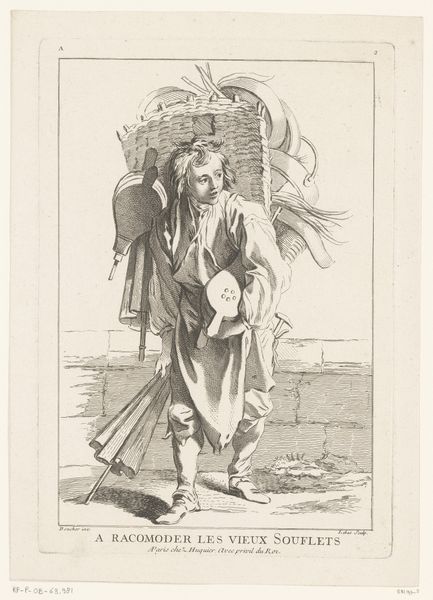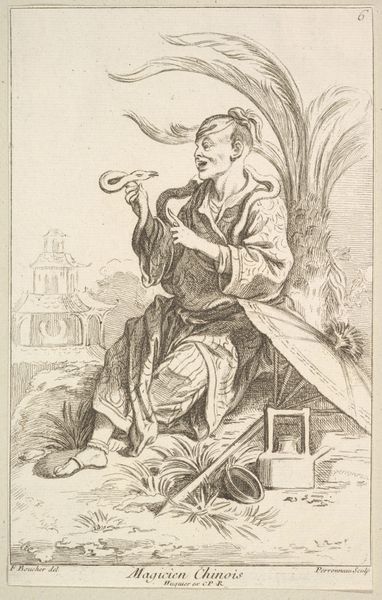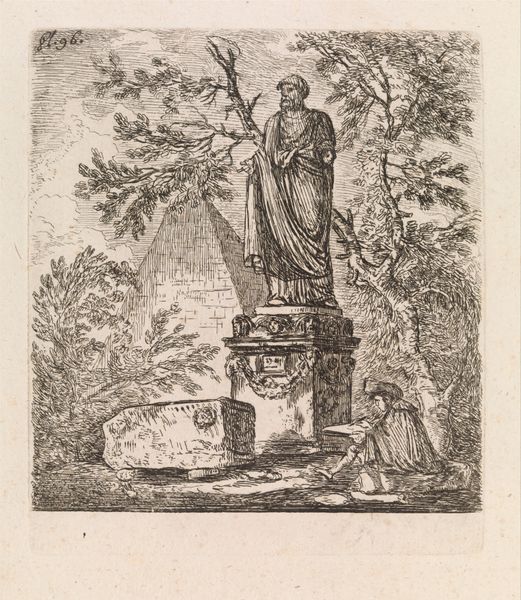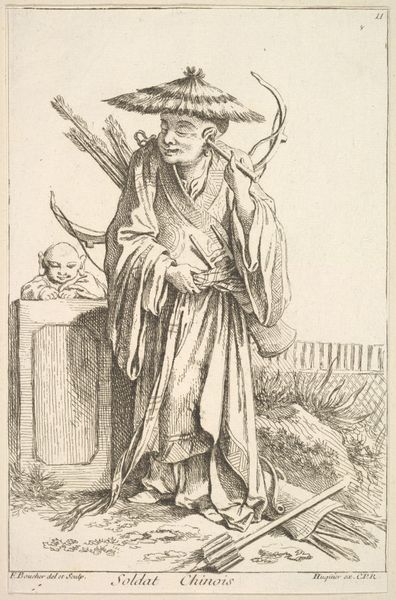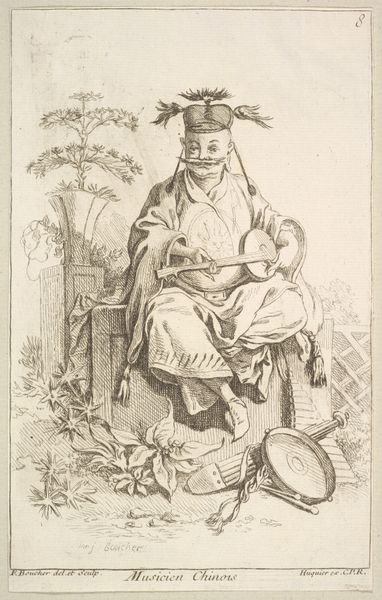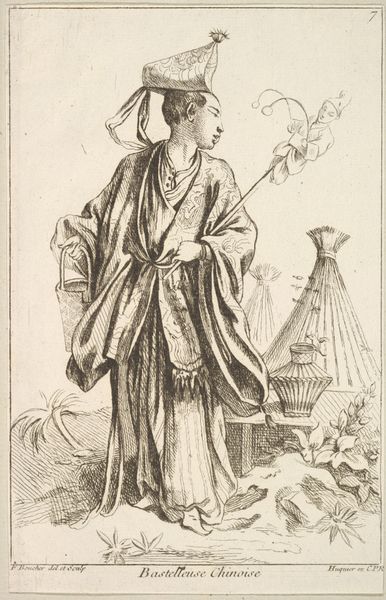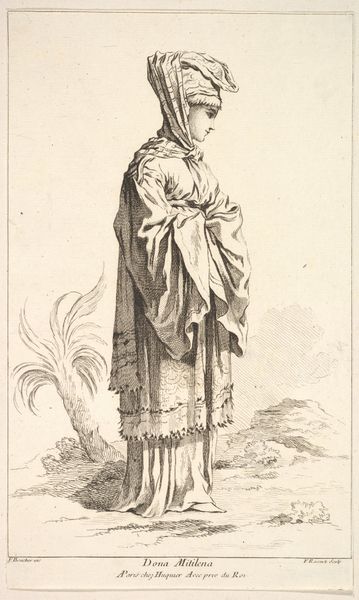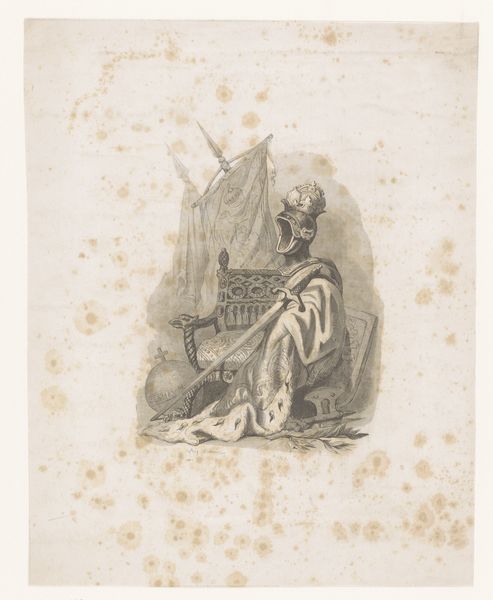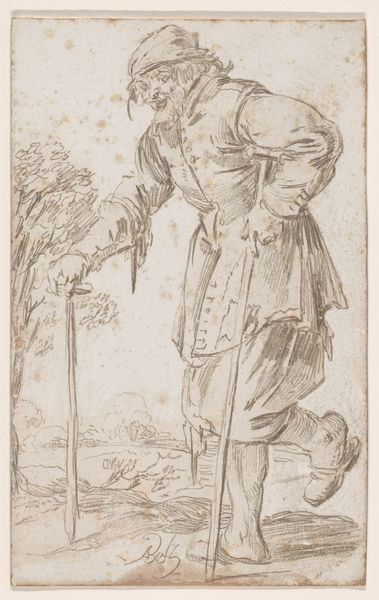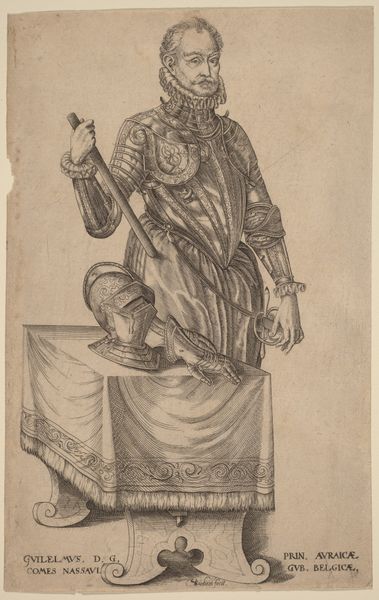
drawing, print
#
drawing
#
light pencil work
#
mechanical pen drawing
# print
#
pen illustration
#
pen sketch
#
old engraving style
#
personal sketchbook
#
pen-ink sketch
#
men
#
pen work
#
sketchbook drawing
#
sketchbook art
Dimensions: Sheet (trimmed): 8 1/8 × 5 1/4 in. (20.6 × 13.3 cm)
Copyright: Public Domain
Curator: Looking at this rather unusual image by François Boucher, a drawing dating from between 1738 and 1745, titled "Chinese Doctor," now housed at The Metropolitan Museum of Art, what are your initial thoughts? Editor: Utterly charming! The cross-hatching creates a wonderful depth despite the limitations of pen and ink. There’s a palpable whimsicality to it; the composition feels buoyant. I’m drawn to the decorative bells that festoon the bizarre throne. Curator: Indeed, it's a fine example of Chinoiserie, reflecting the 18th-century European fascination with an imagined version of China. We see Boucher's involvement with the decorative arts for the Beauvais tapestry manufactory heavily influencing his rendering of perceived exoticism in cultural settings. Editor: Exactly! And those elements can certainly be further contextualized! Consider Boucher's participation in the project for the Cabinet Chinois at the Château de Bellevue for Madame de Pompadour, who was very influential as a cultural figure at the time. We may interpret this image within the artistic patronage of a politically savvy female aristocrat. It signals courtly pastimes like elaborate masquerades and theater, which idealized Asia. Curator: Note, however, how Boucher is employing the stylistic conventions that would’ve resonated with period audiences. This is where, from a purely formal point of view, one might consider how the image makes strategic use of contrasting textures and precise outlines. Consider the patterned seat adorned with dangling bells versus the solid facial features of the 'doctor'. It plays upon ideas of superficial adornment versus deeper humanity. Editor: Interesting. But how can we ignore the Orientalist connotations of exoticizing this supposed ‘Chinese doctor’ figure for privileged consumption? It presents a problematic view, especially when exhibited today without this nuanced understanding of historical dynamics and visual exploitation. The placement within The Met then underscores a critical responsibility in presenting contextualized insights. Curator: I appreciate how you introduce a more sociopolitical lens. Considering the details through semiotic analysis, the fan held next to his foot acts as a loaded cultural signifier: leisure, wealth, a fetishized status… However, zooming in again, this time visually, I think this element also serves as visual rest stop for the viewers' eyes to then move up towards the rest of the composition. Editor: Perhaps a potent conclusion is how art's meaning remains unstable across eras; though formally playful, "Chinese Doctor" demands ongoing engagement to uncover its entanglement in political ideologies. Curator: Absolutely. And viewing it now still offers ample rewards for viewers willing to navigate those intricacies!
Comments
No comments
Be the first to comment and join the conversation on the ultimate creative platform.
